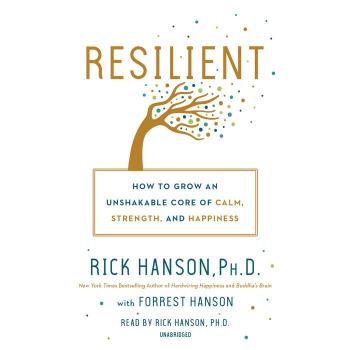
Dying to Control by Leon Hayduchok
In Dying to Control by Leon Hayduchok, the author presents an analysis of our behavior based on the lessons from account of Genesis 2-3.
In summary, Hayduchok states that “humans want to be like God, knowing good and evil. We want to be in control, doing what seems right in our own eyes, eating more and more forbidden fruit as we try to enjoy the ride on the merryless-go-round.” He further summarizes this thesis with the following:
To perpetuate the illusion of being in control and the delusion that we can sustain our own existence, we live like mannequins on display, covering and hiding the naked truth of who we are, what we think, and the shameful things we’ve said and done. Furthermore, if some truth comes to light, a truth that leads us to feel naked and ashamed, all we have to do is play the blame game to regain the illusion of being in control and to feel justified in having done what seemed right in our own eyes. This is the endless cycle that comes with eating from the Tree of Knowledge of Good and Evil. This is the story of dying to control.
This way of looking at life does reflect the 21st. century as we know it today. Using Genesis 2-3 as a lens to look at today’s culture and how to deal with the problems that come up, Hayduchok uses personal experience as well as good exposition from Scripture to address the problem of control.
Hayduchok makes the observation: “In the Bible the conflict centers around the knowledge of good and evil, but in the children’s story the conflict centers around the forbidden fruit.” The central conflict is not about man’s obedience, but man’s relationship with God and the control man wants to exert over that relationship.
Once the central conflict in the story is addressed, Hayduchok traces the history of interpretation about “good and evil.” The key is the knowledge that the fruit of the tree possesses. There have been different interpretations but four main interpretations continue to this day: (1) universal knowledge, (2) sexual knowledge, (3) ethical or moral discrimination knowledge, and (4) inner dynamics (cosmic knowledge). Whatever the interpretation, the application was independence from God. They have become arbiters of good and evil (per Augustine and Bonhöffer) and can make their own decisions with god-like authority. Hayduchok uses a T diagram to illustrate this concept and he does a very good job of explaining how a selfish person makes themselves the judge of what is good and evil. He explains that since everyone judges by using their own concept of good and evil, we come into conflict with others for control (72-78).
Hayduchok then shows that the curse did not affect humanity. He says: “God didn’t curse human beings; he cursed the animals and the ground, and this distinction makes all the difference.” In essence, Hayduchok is making the claim that God does not hate humanity, but that God hates what humanity did in the garden. It is an important distinction, and one that takes him almost half the book to get to show. As a result, God makes an effort to redeem humanity from the curse by giving a prophecy about Christ.
Strangely, Hayduchok recalls his own experience as a pastor of a large church, and how his expectations were not fulfilled (84-96). I still don’t know how this fit into his explanation of the curse in Genesis 3, but he seemed to need to insert that story to show a point. After which, he uses personal experiences to describe the kind of control we place on each other. He explained that he had many expectations which he thought was placed on him. From eating properly, to how to behave in front of other people, to how to grow a church, Hayduchok recalled his personal experience of how people in essence showed “control” over him. While he never said it in those terms, he is essentially stating that case. He uses the example of his wife’s pregnancy as a tangent point to describe how people want to control the birth (or lack of birth through an abortion) of their baby so that they can control the kind of child a person would raise. This leads to his main thesis in the next chapter about the “fight for control.”
Hayduchok addresses Genesis 3:16 with a unique interpretation. The liberal interpretation would paraphrase God’s statement as follows: “the woman will desire to experience intimacy with her husband, but the husband will rule his wife with an iron fist.” The conservative interpretation would paraphrase God’s statement as follows: “the woman will desire to usurp her husband’s authority even though God has instructed her to submit to his rule.” Hayduchok has a third view: “the woman will seek to control her husband, while the man will do whatever he can to control his wife.”
Hayduchock deals with the end of the story by describing the difference between innocence/guilt cultures versus shame/honor cultures. He uses Genesis 2:25, Genesis 3:10, and Genesis 3:21 to show that God was addressing their shame by clothing them. By doing this, Hayduchock correctly states that the Genesis account makes “the glaring parallel that just as Adam and Eve were naked and ashamed as they ate the fruit that hung on the Tree of Knowledge of Good and Evil, Jesus was naked and ashamed as he hung on the tree of death” (138). This seems to be a better explanation than the use of skin to cover sin’s guilt (although that interpretation is just as valid).
Overall, I found the book interesting in its conclusion that God allowed all of these events to unfold in Genesis 2-3 not so that humanity could have control over one another, but so that they could ultimately trust God. Dying to control then is a form of trusting God and it Hayduchok makes the case that this is the better way to live. I would agree.
Disclosure of Material Connection: I received this book free from the author and/or publisher through the Speakeasy blogging book review network. I was not required to write a positive review. The opinions I have expressed are my own. I am disclosing this in accordance with the Federal Trade Commission’s 16 CFR,Part 255.
#SpeakeasyDyingtoControl, #SpeakEasy











